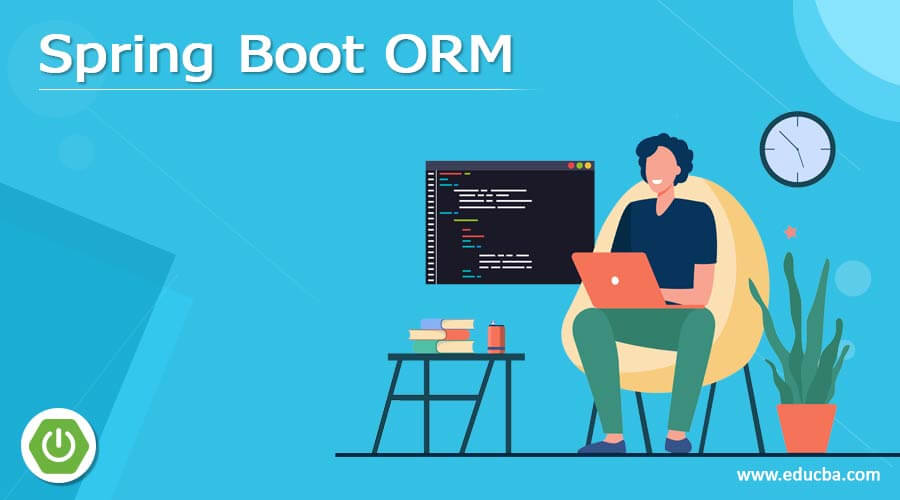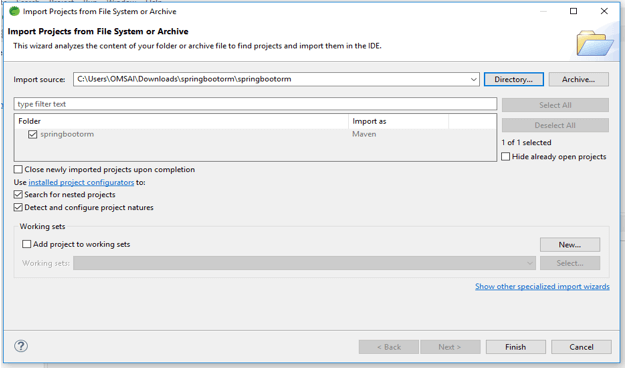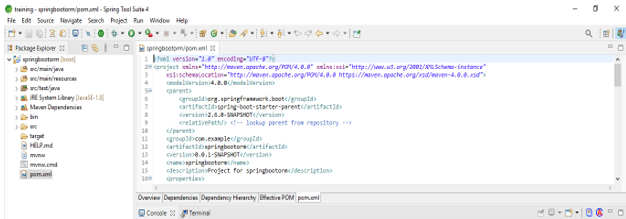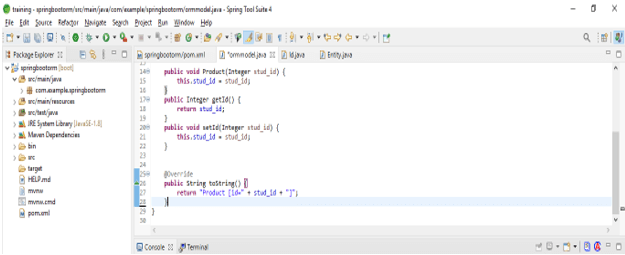Updated March 29, 2023
Definition of Spring Boot ORM
It is nothing but the object-relational mapping which was used to access data from the database server. Spring boot framework supports us to integrate with the java data objects, hibernate, java persistence API transaction strategies and implementations. Spring boot also added some enhancement with orm layer of our choice when we are creating data access applications. We can leverage integration support as per our wish.
What is Spring Boot ORM?
- We can develop our application with minimal coding, we have no need to write extra code after and before the database logic which was we have used in our applications. We can use less number codes in programs like starting our transaction, closing our transaction, committing our transaction, and getting connection from the database server.
- While developing our application it is easy to test our application as compared to other technologies.
- It provides its own API for exception handling with the ORM framework. We can say that it handles better exceptions as compared to other technologies.
- To develop an application we need to add spring context and spring orm dependency in pom.xml file of our application.
- We also need the driver of JDBC as dependency to access the database server. To develop the application we are using annotation of JPA to map bean class because as we know that hibernate is providing the implementation of JPA.
Spring Boot ORM
- It adds significant support by using the layer of O/R mapping as per our choice to implement access applications of data.
- It wraps the exception as per the tool choice of O/R mapping. We can also convert the exception of proprietary to runtime hierarchy of data access exception.
- We can handle exceptions anywhere in code where we need them. As we know that JDBC exception is handled in same hierarchy.
- It handles the location and configuration of hibernate and the instances of the session factory.
- Transaction semantics is handled for us also transaction handling in some case of exception handling is taken care of.
- By developing the project we are using JPA standard annotation in our model bean class.
Spring with ORM frameworks
- There are multiple advantages of using spring boot with ORM framework are as follows.
- Less coding
- Exception handling
- We can test our application easily
- Transaction management
- To use the framework we need to set up the spring boot context by using pom maven and the Java-based configuration of the project.
- It is basically used to create our spring boot application faster. This is achieved by using auto-configuration and the starter of various types of functionalities.
- To develop an application using orm framework spring boot configures the default JPA provider as hibernate.
- It contains the transaction management which is integrated, we can say that we can wrap our code of mapping with a wrapper class template.
Spring Boot ORM Model Class
Below example show to create model class are as follows.
1) Create project template using spring initializer and give name to project
In below step, we have providing project group name as com. example, artifact name as springbootorm, project name as springbootorm, and selected java version as 8.
Group – com. example
Artifact name – springbootorm
Name – springbootorm
Spring boot – 2.6.0
Project – Maven
Project Description – Project for springbootorm
Java – 8
Dependencies – spring data JPA, spring web
Package name – com.example.springbootorm
2) After generating project extract files and open this project by using spring tool suite –
3) After opening project using the spring tool suite check the project and its files –
4) Add dependency packages –
In this step, we are adding the required dependency in our project.
Code:
<dependency> -- Start of dependency tag.
<groupId>org.springframework</groupId> -- Start and end of groupId tag.
<artifactId>spring-context </artifactId> -- Start and end of artifactId tag.
</dependency> -- End of dependency tag.
<dependency> -- Start of dependency tag.
<groupId>org.springframework</groupId> -- Start and end of groupId tag.
<artifactId>spring-orm </artifactId> -- Start and end of artifactId tag.
</dependency> -- End of dependency tag.5) Create spring orm model class –
Code:
@Entity
public class ormmodel {
@Id
private Integer stud_id;
public void student() {
}
public void Product(Integer stud_id) {
this.stud_id = stud_id;
}
public Integer getId() {
return stud_id;
}
public void setId(Integer stud_id) {
this.stud_id = stud_id;
}
@Override
public String toString() {
return "Product [id=" + stud_id + "]";
}
}Examples
We are using the spring orm model class template to describe the examples.
1) Create orm DAO class –
Code:
@Component
public class ormdao {
@PersistenceContext
private stud st;
public void persist(ormmodel orm) {
st.persist (orm);
}
public List findAll() {
return ((Object) st.createQuery ("SELECT stud_id FROM student")).getResultList();
}
}2) Create orm service class –
Code:
@Component
public class ormservice {
@Autowired
private ormdao oDao;
@Transactional
public void add(ormmodel orm) {
oDao.persist(orm);
}
@Transactional
public void addAll(Collection<ormmodel> orm) {
for (ormmodel orm1 : orm) {
oDao.persist(orm1);
}
}
@Transactional(readOnly = true)
public List listAll() {
return oDao.findAll();
}
}3) Create bean configuration XML –
Code:
<bean id="orm" class="org.springframework.jdbc.datasource.DriverManagerDataSource">
<property name="driverClassName" value="org.postgresql.jdbcDriver" />
<property name="url" value="jdbc:postgresql:stud://student" />
<property name="username" value="postgres" />
<property name="password" value="postgres" />
</bean>4) Test the project –
Code:
public class ormmain {
ClassPathXmlApplicationContext ctx = new ClassPathXmlApplicationContext("classpath:/orm.xml");
ormservice oservice = ctx.getBean(ormservice.class);
oservice.add(new stud(1));
System.out.println("listAll: " + ormservice.listAll());
System.out.println("listAll: " + ormservice.listAll());
ctx.close();
}5) Run the application –
Conclusion
Spring boot orm is providing the API to integrate spring boot with ORM frameworks like java Persistence API (JPA), java data object (JDO), and hibernate. It allows us to handle exception which is non-recoverable and it is also throwing an exception from exception declaration.
Recommended Articles
This is a guide to Spring Boot ORM. Here we discuss definition, What is Spring Boot ORM, Spring Boot ORM Model Class, examples with code. You may also have a look at the following articles to learn more –











